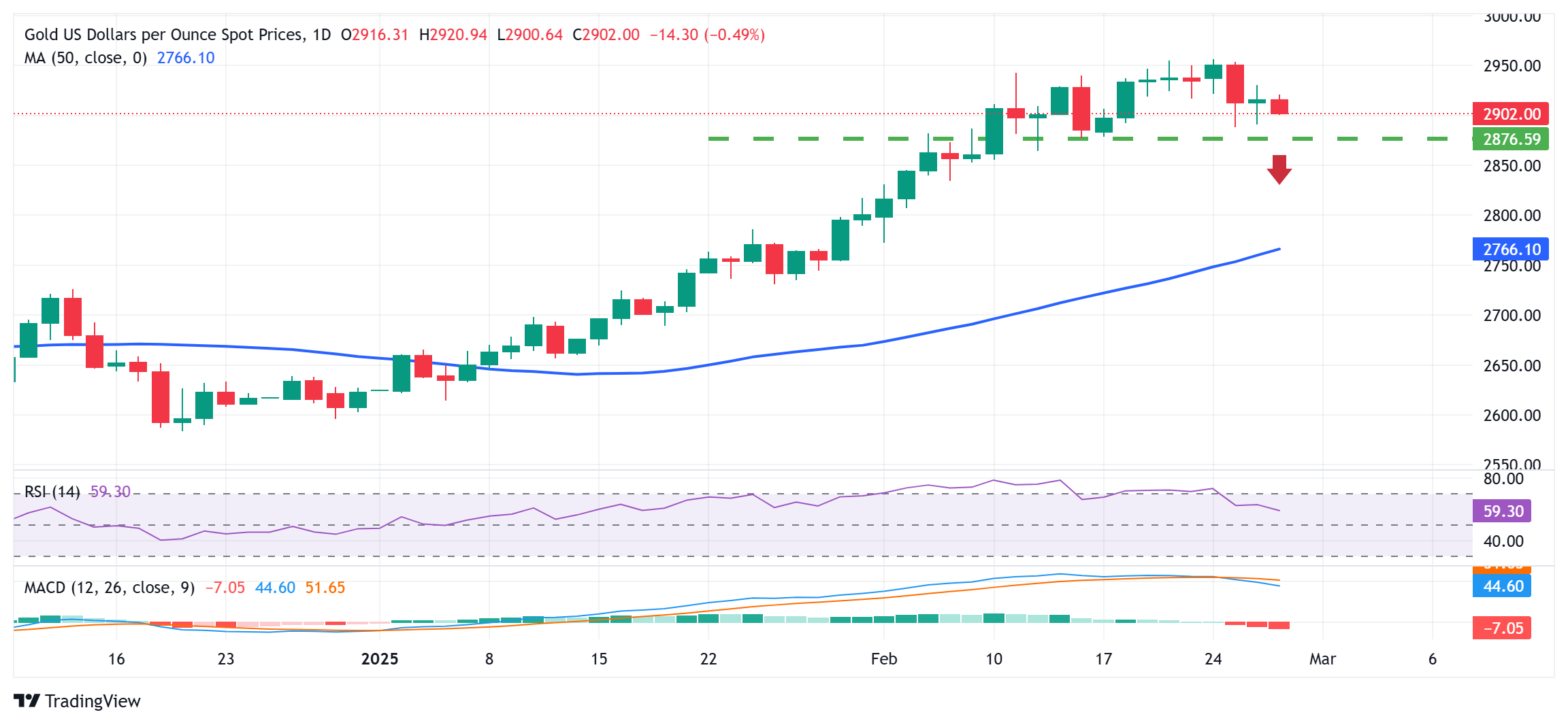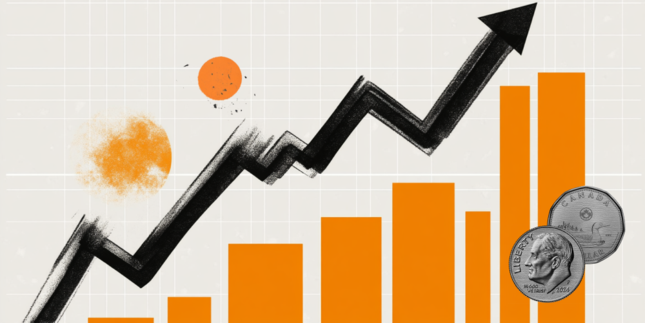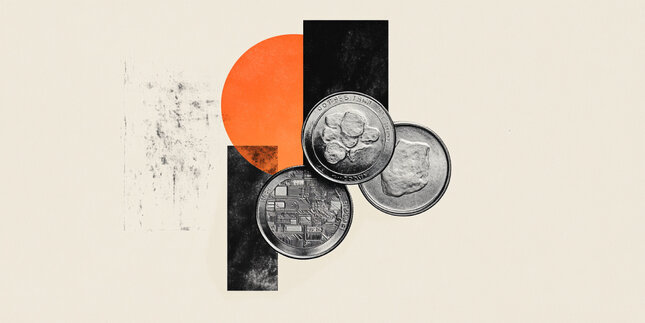Gold price hangs near weekly low, below $2,900 as rebounding US bond yields underpin USD
- Gold price drifts lower as an uptick in US bond yields allows the USD to move away from a multi-month low.
- The uncertainty over Trump’s tariff plans and trade war fears should act as tailwinds for the XAU/USD pair.
- Bets that the Fed will cut interest rates further this year might contribute to limiting losses for the yellow metal.
Gold price (XAU/USD) retains its intraday bearish bias through the early European session on Thursday and currently trades around the $2,890 region, or over a one-week low touched the previous day. A modest pickup in the US Treasury bond yields assists the US Dollar (USD) to build on the overnight modest bounce from its lowest level since December 10. This, along with a generally positive tone around the equity markets, turns out to be a key factors undermining the precious metal.
However, the uncertainty over US President Donald Trump's tariff plans and trade war fears warrants some caution for bearish traders and before confirming that the safe-haven Gold price has topped out in the near term. Furthermore, expectations that the Federal Reserve (Fed) will cut interest rates further, amid signs of a cooling US economy and growth concerns, could limit losses for the non-yielding bullion. Traders now look forward to Thursday's US economic docket for a fresh impetus.
Gold price continues to be weighed down by a pickup in US bond yields and a modest USD strength
- The US Dollar builds on the overnight bounce from the 11-week low amid a modest bounce in the US Treasury bond yields and exerts some downward pressure on the Gold price during the Asian session on Thursday.
- US President Donald Trump fueled hopes for another pause on steep new tariffs on imports from Mexico and Canada and said on Wednesday that they could take effect on April 2, vs. the previous deadline on March 4.
- A White House official, however, said that the deadline for tariffs on Mexican and Canadian goods remained in effect "as of this moment," pending Trump's review of actions to halt the flow of migrants into the US.
- Furthermore, Trump said that his administration will soon announce a 25% tariff on imports from the European Union, which continues to fuel uncertainty and should act as a tailwind for the safe-haven precious metal.
- Bets for more interest rate cuts by the Federal Reserve this year are on the rise in the wake of the recent downbeat US macro data, which pointed to signs of a cooling economy and fueled concerns about the growth outlook.
- Atlanta Fed President Raphael Bostic noted on Wednesday that the US central bank should hold rates where they are, at a level that continues to put downward pressure on inflation, which has shown a lot of progress but is still high.
- Hence, the focus will remain glued to the release of the US Personal Consumption Expenditures (PCE) Price Index – the Fed's preferred inflation measure – due on Friday for further cues about the central bank's rate-cut path.
- In the meantime, Thursday's US economic docket – featuring the release of the Prelim Q4 GDP print, Durable Goods Orders, Pending Home Sales, and Weekly Initial Jobless Claims – might provide short-term impetuses.
- Apart from this, speeches by influential FOMC members could offer more insights on policy easing this year, which will drive the USD demand and contribute to producing trading opportunities around the XAU/USD pair.
Gold price dip-buying should help limit the corrective decline near the $2,860 pivotal support

From a technical perspective, the $2,888 area, or over a one-week low touched on Tuesday is likely to act as immediate support ahead of the $2,878 zone and the $2,860-2,855 region. Failure to defend the said support levels could make the Gold price vulnerable to accelerate the corrective decline further towards the $2,834 region en route to the $2,800 round-figure mark.
On the flip side, any positive move beyond the $2,920 immediate hurdle could attract some sellers near the overnight swing high, around the $2,930 region. A sustained strength beyond the latter has the potential to lift the Gold price further toward the $2,950-2,955 horizontal resistance, or the record high touched on the first day of the current week.
Interest rates FAQs
Interest rates are charged by financial institutions on loans to borrowers and are paid as interest to savers and depositors. They are influenced by base lending rates, which are set by central banks in response to changes in the economy. Central banks normally have a mandate to ensure price stability, which in most cases means targeting a core inflation rate of around 2%. If inflation falls below target the central bank may cut base lending rates, with a view to stimulating lending and boosting the economy. If inflation rises substantially above 2% it normally results in the central bank raising base lending rates in an attempt to lower inflation.
Higher interest rates generally help strengthen a country’s currency as they make it a more attractive place for global investors to park their money.
Higher interest rates overall weigh on the price of Gold because they increase the opportunity cost of holding Gold instead of investing in an interest-bearing asset or placing cash in the bank. If interest rates are high that usually pushes up the price of the US Dollar (USD), and since Gold is priced in Dollars, this has the effect of lowering the price of Gold.
The Fed funds rate is the overnight rate at which US banks lend to each other. It is the oft-quoted headline rate set by the Federal Reserve at its FOMC meetings. It is set as a range, for example 4.75%-5.00%, though the upper limit (in that case 5.00%) is the quoted figure. Market expectations for future Fed funds rate are tracked by the CME FedWatch tool, which shapes how many financial markets behave in anticipation of future Federal Reserve monetary policy decisions.
Forex News
Keep up with the financial markets, know what's happening and what is affecting the markets with our latest market updates. Analyze market movers, trends and build your trading strategies accordingly.

























